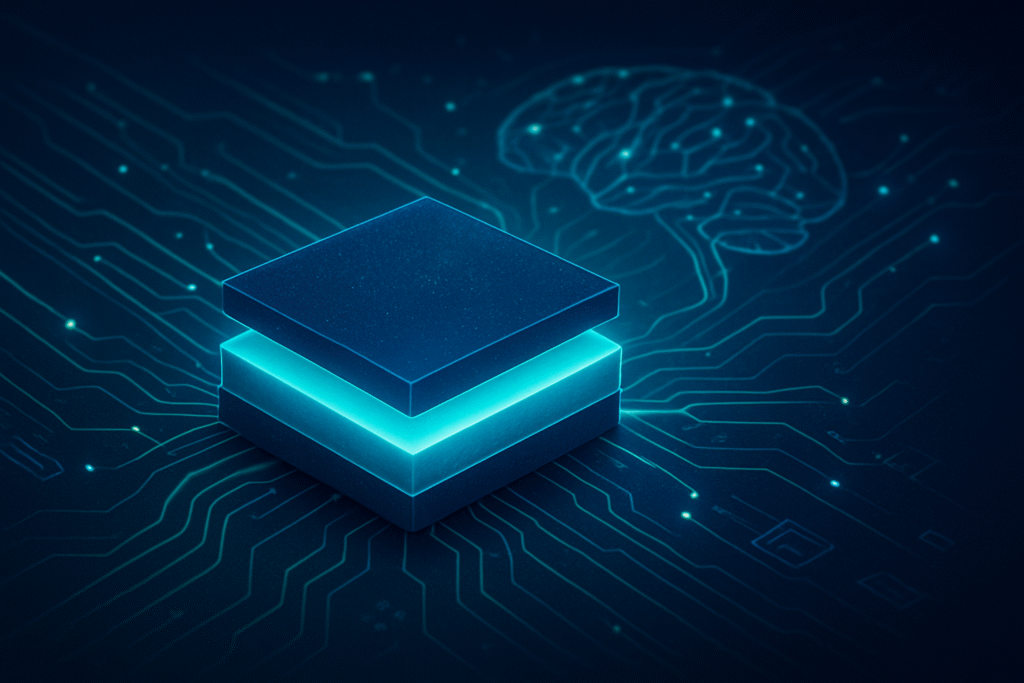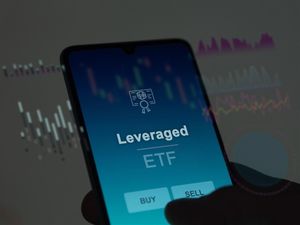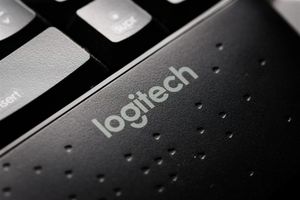
The semiconductor industry is on the cusp of a major transformation, with Silicon On Insulator (SOI) technology emerging as a critical enabler for the next generation of high-performance, energy-efficient, and reliable electronic devices. As of late 2025, the SOI market is experiencing robust growth, driven by the insatiable demand for advanced computing, 5G/6G communications, automotive electronics, and the burgeoning field of Artificial Intelligence (AI). This innovative substrate technology, which places a thin layer of silicon atop an insulating layer, promises to redefine chip design and manufacturing, offering significant advantages over traditional bulk silicon and addressing the ever-increasing power and performance demands of modern AI workloads.
The immediate significance of SOI lies in its ability to deliver superior performance with dramatically reduced power consumption, making it an indispensable foundation for the chips powering everything from edge AI devices to sophisticated data center infrastructure. Forecasts project the global SOI market to reach an estimated USD 1.9 billion in 2025, with a compound annual growth rate (CAGR) of over 14% through 2035, underscoring its pivotal role in the future of advanced semiconductor manufacturing. This growth is a testament to SOI's unique ability to facilitate miniaturization, enhance reliability, and unlock new possibilities for AI and machine learning applications across a multitude of industries.
The Technical Edge: How SOI Redefines Semiconductor Performance
SOI technology fundamentally differs from conventional bulk silicon by introducing a buried insulating layer, typically silicon dioxide (BOX), between the active silicon device layer and the underlying silicon substrate. This three-layered structure—thin silicon device layer, insulating BOX layer, and silicon handle layer—is the key to its superior performance. In bulk silicon, active device regions are directly connected to the substrate, leading to parasitic capacitances that hinder speed and increase power consumption. The dielectric isolation provided by SOI effectively eliminates these parasitic effects, paving the way for significantly improved chip characteristics.
This structural innovation translates into several profound performance benefits. Firstly, SOI drastically reduces parasitic capacitance, allowing transistors to switch on and off much faster. Circuits built on SOI wafers can operate 20-35% faster than equivalent bulk silicon designs. Secondly, this reduction in capacitance, coupled with suppressed leakage currents to the substrate, leads to substantially lower power consumption—often 15-20% less power at the same performance level. Fully Depleted SOI (FD-SOI), a specific variant where the silicon film is thin enough to be fully depleted of charge carriers, further enhances electrostatic control, enabling operation at lower supply voltages and providing dynamic power management through body biasing. This is crucial for extending battery life in portable AI devices and reducing energy expenditure in data centers.
Moreover, SOI inherently eliminates latch-up, a common reliability issue in CMOS circuits, and offers enhanced radiation tolerance, making it ideal for automotive, aerospace, and defense applications that often incorporate AI. It also provides better control over short-channel effects, which become increasingly problematic as transistors shrink, thereby facilitating continued miniaturization. The semiconductor research community and industry experts have long recognized SOI's potential. While early adoption was slow due to manufacturing complexities, breakthroughs like Smart-Cut technology in the 1990s provided the necessary industrial momentum. Today, SOI is considered vital for producing high-speed and energy-efficient microelectronic devices, with its commercial success solidified across specialized applications since the turn of the millennium.
Reshaping the AI Landscape: Implications for Tech Giants and Startups
The adoption of SOI technology carries significant competitive implications for semiconductor manufacturers, AI hardware developers, and tech giants. Companies specializing in SOI wafer production, such as SOITEC (EPA: SOIT) and Shin-Etsu Chemical Co., Ltd. (TYO: 4063), are at the foundation of this growth, expanding their offerings for mobile, automotive, industrial, and smart devices. Foundry players and integrated device manufacturers (IDMs) are also strategically leveraging SOI. GlobalFoundries (NASDAQ: GFS) is a major proponent of FD-SOI, offering advanced processes like 22FDX and 12FDX, and has significantly expanded its SOI wafer production for high-performance computing and RF applications, securing a leading position in the RF market for 5G technologies.
Samsung (KRX: 005930) has also embraced FD-SOI, with its 28nm and upcoming 18nm processes targeting IoT and potentially AI chips for companies like Tesla. STMicroelectronics (NYSE: STM) is set to launch 18nm FD-SOI microcontrollers with embedded phase-change memory by late 2025, enhancing embedded processing capabilities for AI. Other key players like Renesas Electronics (TYO: 6723) and SkyWater Technology (NASDAQ: SKYT) are introducing SOI-based solutions for automotive and IoT, highlighting the technology's broad applicability. Historically, IBM (NYSE: IBM) and AMD (NASDAQ: AMD) were early adopters, demonstrating SOI's benefits in their high-performance processors.
For AI hardware developers and tech giants like NVIDIA (NASDAQ: NVDA), Google (NASDAQ: GOOGL), Amazon (NASDAQ: AMZN), and Microsoft (NASDAQ: MSFT), SOI offers strategic advantages, particularly for edge AI and specialized accelerators. While NVIDIA's high-end GPUs for data center training primarily use advanced FinFETs, the push for energy efficiency in AI means that SOI's low power consumption and high-speed capabilities are invaluable for miniaturized, battery-powered AI devices. Companies designing custom AI silicon, such as Google's TPUs and Amazon's Trainium/Inferentia, could leverage SOI for specific workloads where power efficiency is paramount. This enables a shift of intelligence from the cloud to the edge, potentially disrupting market segments heavily reliant on cloud-based AI processing. SOI's enhanced hardware security against physical attacks also positions FD-SOI as a leading platform for secure automotive and industrial IoT applications, creating new competitive fronts.
Broader Significance: SOI in the Evolving AI Landscape
SOI technology's impact extends far beyond incremental improvements, positioning it as a fundamental enabler within the broader semiconductor and AI hardware landscape. Its inherent advantages in power efficiency, performance, and miniaturization are directly addressing some of the most pressing challenges in AI development today: the demand for more powerful yet energy-conscious computing. The ability to significantly reduce power consumption (by 20-30%) while boosting speed (by 20-35%) makes SOI a cornerstone for the proliferation of AI into ubiquitous, always-on devices.
In the context of the current AI landscape (October 2025), SOI is particularly crucial for:
- Edge AI and IoT Devices: Enabling complex machine learning tasks on low-power, battery-operated devices, extending battery life by up to tenfold. This facilitates the decentralization of AI, moving intelligence closer to the data source.
- AI Accelerators and HPC: While FinFETs dominate the cutting edge for ultimate performance, FD-SOI offers a compelling alternative for applications prioritizing power efficiency and cost-effectiveness, especially for inference workloads in data centers and specialized accelerators.
- Silicon Photonics for AI/ML Acceleration: Photonics-SOI is an advanced platform integrating optical components, vital for high-speed, low-power data center interconnects, and even for novel AI accelerator architectures that vastly outperform traditional GPUs in energy efficiency.
- Quantum Computing: SOI is emerging as a promising platform for quantum processors, with its buried oxide layer reducing charge noise and enhancing spin coherence times for silicon-based qubits.
While SOI offers immense benefits, concerns remain, primarily regarding its higher manufacturing costs (estimated 10-15% more than bulk silicon) and thermal management challenges due to the insulating BOX layer. However, the industry largely views FinFET and FD-SOI as complementary, rather than competing, technologies. FinFETs excel in ultimate performance and density scaling for high-end digital chips, while FD-SOI is optimized for applications where power efficiency, cost-effectiveness, and superior analog/RF integration are paramount—precisely the characteristics needed for the widespread deployment of AI. This "two-pronged approach" ensures that both technologies play vital roles in extending Moore's Law and advancing computing capabilities.
Future Horizons: What's Next for SOI in AI and Beyond
The trajectory for SOI technology in the coming years is one of sustained innovation and expanding application. In the near term (2025-2028), we anticipate further advancements in FD-SOI, with Samsung (KRX: 005930) targeting mass production of its 18nm FD-SOI process in 2025, promising significant performance and power efficiency gains. RF-SOI will continue its strong growth, driven by 5G rollout and the advent of 6G, with innovations like Atomera's MST solution enhancing wafer substrates for future wireless communication. The shift towards 300mm wafers and improved "Smart Cut" technology will boost fabrication efficiency and cost-effectiveness. Power SOI is also set to see increased demand from the burgeoning electric vehicle market.
Looking further ahead (2029 onwards), SOI is expected to be at the forefront of transformative developments. 3D integration and advanced packaging will become increasingly prevalent, with FD-SOI being particularly well-suited for vertical stacking of multiple device layers, enabling more compact and powerful systems for AI and HPC. Research will continue into advanced SOI substrates like Silicon-on-Sapphire (SOS) and Silicon-on-Diamond (SOD) for superior thermal management in high-power applications. Crucially, SOI is emerging as a scalable and cost-effective platform for quantum computing, with companies like Quobly demonstrating its potential for quantum processors leveraging traditional CMOS manufacturing. On-chip optical communication through silicon photonics on SOI will be vital for high-speed, low-power interconnects in AI-driven data centers and novel computing architectures.
The potential applications are vast: SOI will be critical for Advanced Driver-Assistance Systems (ADAS) and power management in electric vehicles, ensuring reliable operation in harsh environments. It will underpin 5G/6G infrastructure and RF front-end modules, enabling high-frequency data processing with reduced power. For IoT and Edge AI, FD-SOI's ultra-low power consumption will facilitate billions of battery-powered, always-on devices. Experts predict the global SOI market to reach USD 4.85 billion by 2032, with the FD-SOI segment alone potentially reaching USD 24.4 billion by 2033, driven by a substantial CAGR of approximately 34.5%. Samsung predicts a doubling of FD-SOI chip shipments in the next 3-5 years, with China being a key driver. While challenges like high production costs and thermal management persist, continuous innovation and the increasing demand for energy-efficient, high-performance solutions ensure SOI's pivotal role in the future of advanced semiconductor manufacturing.
A New Era of AI-Powered Efficiency
The forecasted growth of the Silicon On Insulator (SOI) market signals a new era for advanced semiconductor manufacturing, one where unprecedented power efficiency and performance are paramount. SOI technology, with its distinct advantages over traditional bulk silicon, is not merely an incremental improvement but a fundamental enabler for the pervasive deployment of Artificial Intelligence. From ultra-low-power edge AI devices to high-speed 5G/6G communication systems and even nascent quantum computing platforms, SOI is providing the foundational silicon that empowers intelligence across diverse applications.
Its ability to drastically reduce parasitic capacitance, lower power consumption, boost operational speed, and enhance reliability makes it a game-changer for AI hardware developers and tech giants alike. Companies like SOITEC (EPA: SOIT), GlobalFoundries (NASDAQ: GFS), and Samsung (KRX: 005930) are at the forefront of this revolution, strategically investing in and expanding SOI capabilities to meet the escalating demands of the AI-driven world. While challenges such as manufacturing costs and thermal management require ongoing innovation, the industry's commitment to overcoming these hurdles underscores SOI's long-term significance.
As we move forward, the integration of SOI into advanced packaging, 3D stacking, and silicon photonics will unlock even greater potential, pushing the boundaries of what's possible in computing. The next few years will see SOI solidify its position as an indispensable technology, driving the miniaturization and energy efficiency critical for the widespread adoption of AI. Keep an eye on advancements in FD-SOI and RF-SOI, as these variants are set to power the next wave of intelligent devices and infrastructure, shaping the future of technology in profound ways.
This content is intended for informational purposes only and represents analysis of current AI developments.
TokenRing AI delivers enterprise-grade solutions for multi-agent AI workflow orchestration, AI-powered development tools, and seamless remote collaboration platforms.
For more information, visit https://www.tokenring.ai/.






